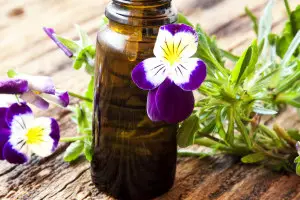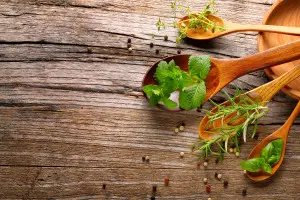This is a question so often asked when it comes to the world of natural health and living. You may be wondering, how can I get the best bang for my buck. Well, it’s the same for most products in most industries. And when it comes to the cost of essential oils – everything from lavender to the higher-priced frankincense – there’s a whole lot of factors to consider.
So let’s begin with this simple question: Why should I pay an average price of $20 for a bottle of lavender oil when I can get it at a discount health foods store for only $9.99? Is there really that much of a difference in terms of quality?
If you’re an essential oil veteran, you’ve probably heard of the high quality, or maybe even the plethora of cheap, off-brand products you may find at Walgreens or health food stores. So how do you decide on what’s best for you?
[amazon box=”B06Y2H3N71″]
Keeping it Pure With Therapeutic Grade Oils
Aromatherapy, and natural products as a whole, has become somewhat of a trend. And more and more marketers and suppliers are putting their skin in the game. This inevitable cycle always leads to saturation. In this case, there’s a saturation of low quality essential oils that have hopped into the mix.
Here are just a few reasons you should consider pure therapeutic grade essential oils over the abundance of junk products on the market (I know, a little harsh):
- Therapeutic grade essential oils are much more potent.
- All you need is a couple drops for effective potency.
- Plants are sourced from indigenous regions where they’re meant to grow naturally.
Are Your Oils Pure?
Therapeutic grade essential oils are an innovative standard for natural health. They are, simply put, the safest and most effective oil solution available in the world. For an essential oil to be “pure,” it must be:
- Naturally pure, with aromatic elements meticulously extracted from plants.
- Extensively tested with only the highest quality standards.
- Free of any pesticides, chemicals, or other contaminants.
- Free of artificial fillers or ingredients, and without dilution.
- Sourced only by professional oil growers and chemists to verify species, environmental growth, and timely harvest.
In other words, it takes a lot of effort and logistical strategy for an essential oil company to become therapeutic grade certified. And cheap imitations simply aren’t going to offer the same value that an authentic natural oil will.
[amazon box=”B0163GBZK8″]
 For Example…
For Example…
Take a cheap, generic lavender oil and stack it up next to a lavender product that is PTG. The generic oil is going to be weaker and much less potent. Sure, the cheaper product may smell nice, but it won’t provide the desired effects, especially when it’s being used for something like anxiety or depression.
Furthermore, applying the generic lavender may provide irritation on your skin, rather than the soothing feeling of the CPTG oil.
Simply put, there’s a startling difference in terms of both quality and effectiveness.
Looking for frankincense? That $10 oil bottle you buy at the health food store might have a nice scent, but it won’t deliver the therapeutic benefits that come from an authentic, high quality frankincense oil. Let’s face it, aromatherapy is much more than just having a pleasing scent. Most likely, you’re not purchasing it for it’s perfume-like qualities. You want a true aromatherapy solution.
Testing for Quality
The purity of an essential oil is one of its most endearing features. And the proper procedures for growing and harvesting are critical to ensuring purity. Lazy or rushed production methods (as well as synthetic alternative methods) will only dilute purity. While adequate analysis of the plants and their characteristics may be time-consuming, it goes a long way for making a quality essential oil.
Essential oil brands like CPTG products deploy robust testing procedures to validate quality at not just one, but a number of production points. After plant selection and distillation, each oil is analyzed for chemical composition. They then go through a three-phase process during the filling process, each with steps confirming that the oil is free of any alterations or contaminants. Without going into too much detail (don’t want to bore you too much), here are just a few quality assurance methods:
- Quality assurance validation
- Organoleptic testing
- Microbial testing
- Comparison of chemistry
- Mass spectrometry and gas chromatography analysis
And believe it or not, there’s much more. But we won’t go into it now.
You can see, making a decision on the right essential oil brand — and the costs associated with it — can be a daunting task. There is simply so much to choose from, and it’s difficult to sort through the duds vs the gems. One piece of advice I’ll offer is to read the labels. Your essential oil should be 100% pure and not diluted.
Note that this isn’t a tried-and-true solution for finding a pure essential oil. It’s just a first step. There are a lot of questionable companies out there who make such claims. So it wouldn’t hurt to do a little research on the company itself as well — and not just the products they offer.
To polish off this article, here are a list of questions to refer to when purchasing your next essential oil:
- Are the fragrances that come from your oil rich and delicate?
- Do they provide a natural, organic feeling?
- Do they have a strong odor or is the scent weak in comparison to other products?
[amazon box=”B071RXT6N8″]




We LPM Co in morocco dealing with trading including essential oils interested to get your offer for diffusers and other interesting offers